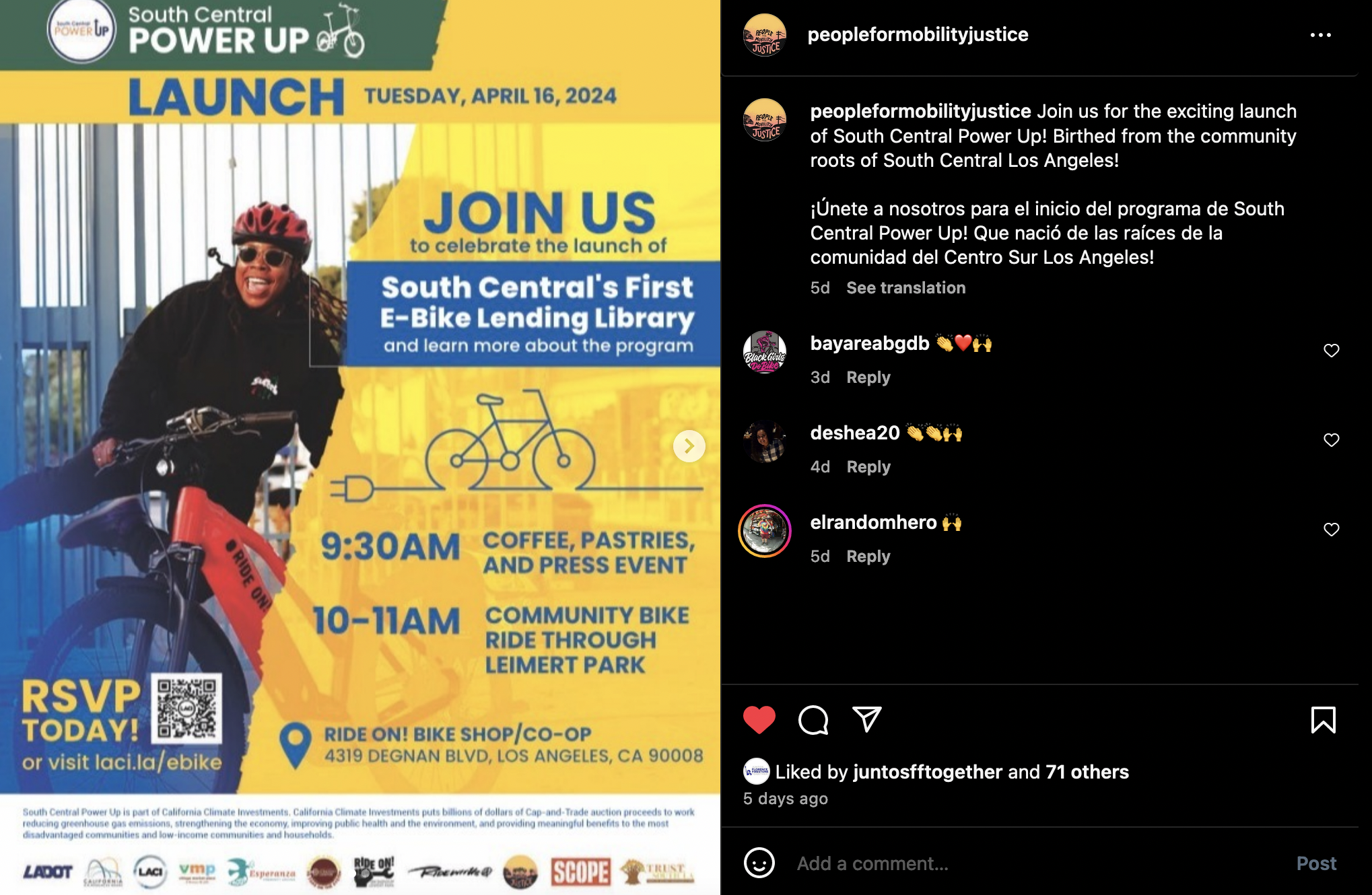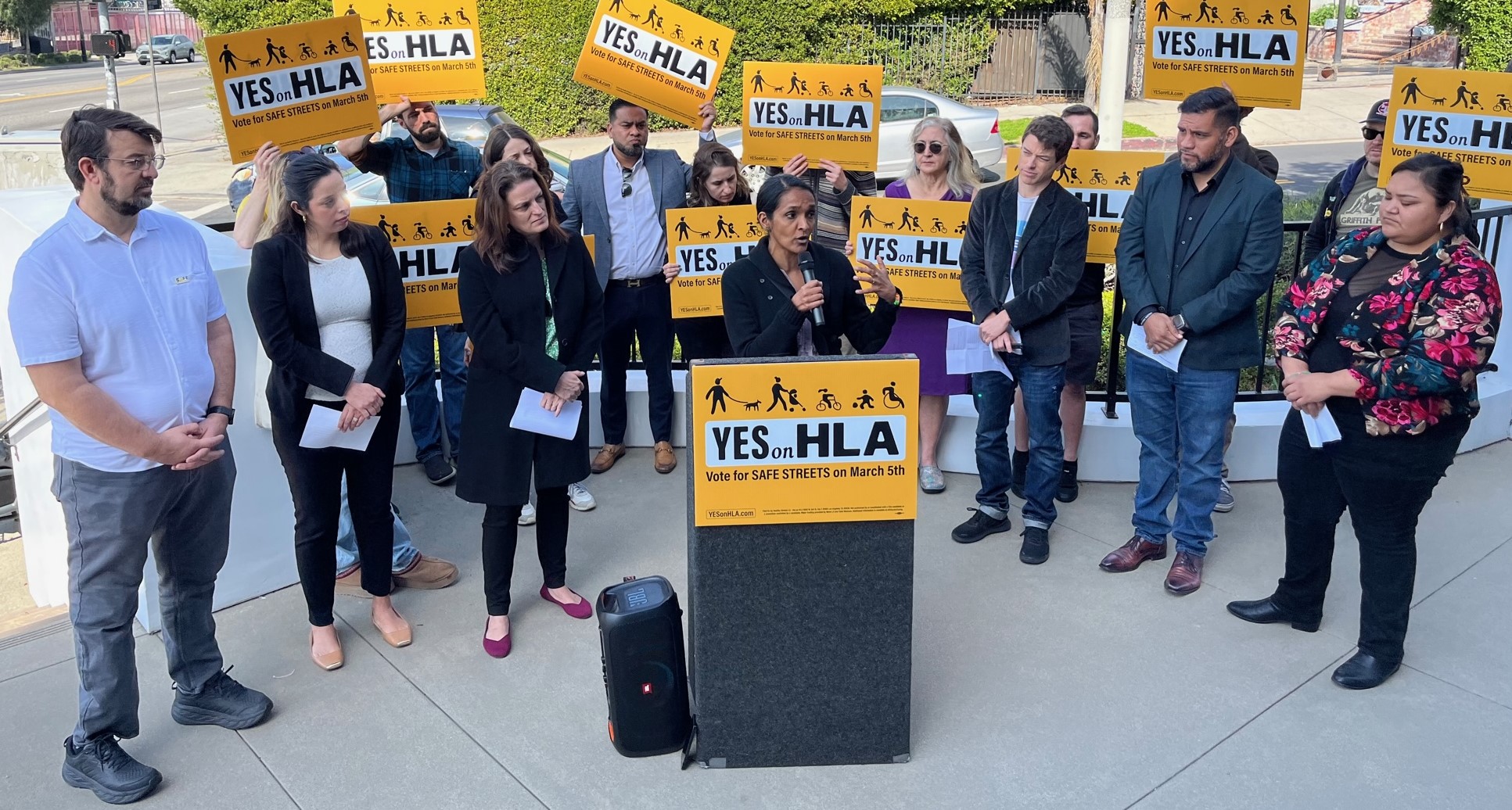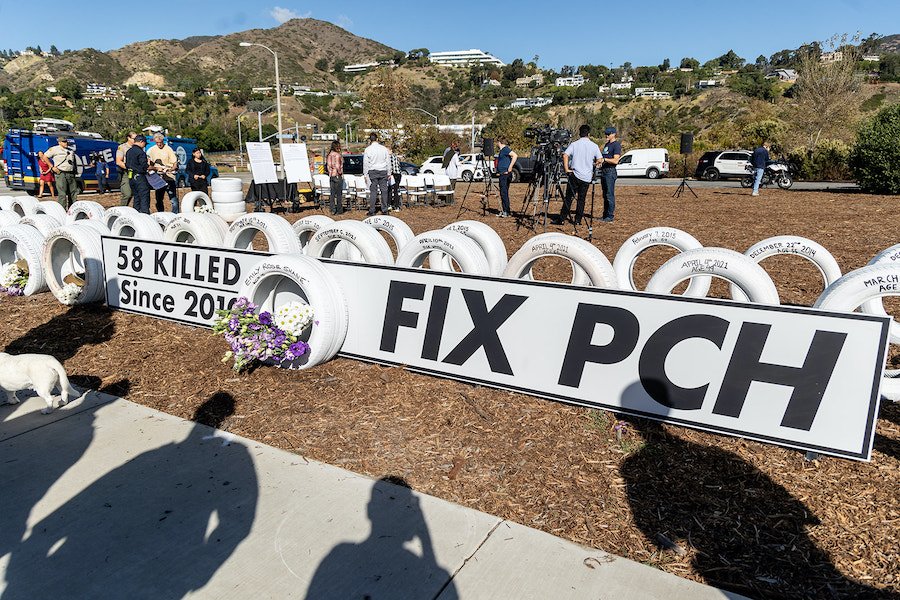Tomorrow, three Metro Board committees will meet in the Metro Board Room to discuss planning, Measure R delivery, and budget matters. You can read agendas for each of these meetings here. Because the Budget and Finance Committee focuses on fiscal gymnastics that are outside of my understanding and the Measure R Delivery Committee's agenda seems very similar to the Planning and Programming Committee, we'll just focus on Planning and Programming for today's preview. The Planning and Programming Committee meets at 1:00 P.M. tomorrow, September 15.
Apparently, I'm not alone in noticing the overlap between the two separate Planning and Programming Committee and the Measure R Delivery Committee. A motion by two Board Members Diane Dubois and Board Chair Don Knabe sought to clarify why the need for two committees. While the motion was withdrawn, it goes to show you that even among the Metro Board there committee structure can be a might confusing.
For today's preview, we'll focus on six different points on the agenda dealing with highway expansion, expanding the transit system and even plans to speed up buses.
First up is a motion from Mayor Villaraigosa and Board Member DuBois to "analyze the Orange County Transportation Authority I-405 widening HOT lanes project and its impacts on Los Angeles County, including the potential for a corresponding facility in LA County." The exact text of the motion isn't yet available, but there's one thing we can expect. Any study of a road widening project that connects to L.A. County is going to show that the widening will add traffic to the L..A County portion of the road. I'm also willing to make the bold prediction that any study done under these pretenses is going to "show" that we "need" to widen the 405 in a similar way to prepare for all the new traffic that the other road widening will create.
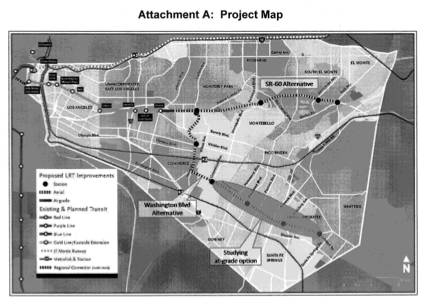
Next up will be a report on what happened at the Scoping Meetings for the Eastside Extension, Phase II. The hearings were held earlier this summer, and there is strong support, and some concern, within the community for an extension that flies above Route 60, and one that runs at-grade through a series of surface streets such as Washington Boulevard and Garfield Avenue. The Committee isn't expected to do anything with the report other than receive it and perhaps offer commentary.
As for the findings of the scoping hearings, they can be summed up from these bullet points from the middle of the report:
- Strong support for the purpose and need for the project;
- Strong support for the SR-60 Alternative, specifically related to benefits of the surrounding area's upcoming mixed-use developments and destinations; the positive design features of the route, including low cost, minimal impacts to residential and business communities, higher ridership per mile; and the potential to alleviate traffic on the heavily traveled SR-60 Freeway.
- A few concerns raised for the SR-60 Alternative included the following: low density development along the alignment, low projected ridership, potential disturbance to Whittier Narrows, and the alignment passing next to the 011 Superfund Site.
- Strong support for the Washington Boulevard Alternative related to potential to strengthen local economies; traffic on the Interstate 5 (1-5) Freeway thereby improving air quality, longer route, lower cost per mile, higher ridership and service to high employment districts along the route.
- Concerns raised for the Washington Boulevard Alternative included the potential impacts to existing residences and businesses along the corridor; visual impacts, right-of-way acquisition, safety issues for students, potential gang violence, seismic concerns, and traffic congestion in the existing truck corridor
Fifth on the agenda is a staff report, requested by the Board, on the feasibility of having the Crenshaw Line light rail project run below-grade. The report itself is worth a longer post, one it will get a little later this week, but for now it's probably enough to say that below-grade would be more expensive and the staff wants the line to remain at-grade.
Next is another report from scoping meetings. This time the project is the Green Line extension into the South Bay. A quick note: this project is not the one that would bring the Green Line all the way to LAX.
There was some concern voiced about noise and pollution impacts along the proposed right-of-way for the project that will have to be addressed as the project moves through the environmental process. From the report:
Support was divided between the Light Rail and the No-Build or TSM Alternatives. Comments were less favorable towards the Freight Track alternative due to concerns for greater traffic, noise, visual and air quality impacts. Other areas of concern included noise,vibration,property values,crime, safety, and traffic impacts. As the environmental process proceeds, these potential impacts will be evaluated.
It should be noted that this extension is partially funded by the Measure R sales tax passed in 2008. In other words, something is going to happen to this corridor, although it appears Metro still has some work to do before the residents will be comfortable with a light rail project.
Every three years, Metro undergoes a performance evaluation audit. For long time Metro watchers and advocates, the report is nothing surprising: ridership is down on buses, but up on rail. However, other municipal operators are picking up some of the slack as Metro is forced to end some bus service because of the state's annual raid on the transit operations sales tax. Overall, ridership numbers are up since the 2003-2004 fiscal year, but down from the highpoint a couple of year's back. The following graph is from the staff report:
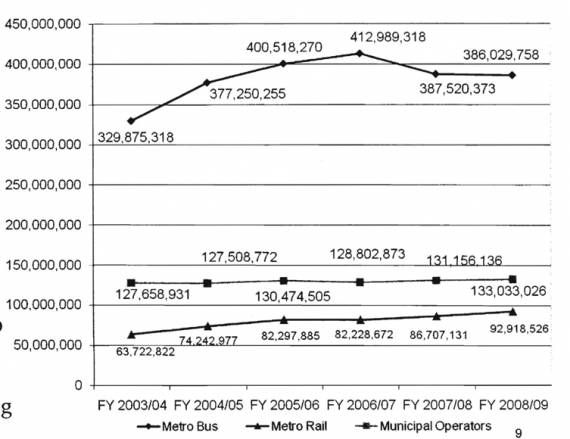
Also not a surprise is that Metro earns good marks for moving on a lot of new projects, but bad marks for the rollout of the TAP program.
Last up is a report on how Metro can speed up bus service. Earlier in the week I naively wrote that the average speed of Metro vehicles is up 6% over the last seven years. In truth, the average bus speed is down 10% since 1985. It's the speed of the rapid bus and rail lines that caused an overall system speed increase.
As for how to speed up travel, this report looked at various high-traffic corridors and came up with recommendations. Some of the recommendations are going to be easy politically, such as widening turning lanes and other parts of the street, because they will be good for increasing car traffic flow also. Whether that increase will negate any benefits remains to be seen, and of course isn't analyzed. Some of the other recommendations, such as increasing the stopping and waiting area to increase the space for buses to pull in and out, could be more difficult because they dare to suggest that moving thousands of passengers more quickly is a better use for space than allowing someone to place a couple of hundred pounds of private property in a public space for no cost.
All in all, it looks like a busy schedule, and a lot of work that can get done. And unlike the Board meeting next week, it won't happen in front of a packed house.
Stay in touch
Sign up for our free newsletter
More from Streetsblog Los Angeles
This Week In Livable Streets
CicLAvia returns to Venice Boulevard, Metro board committees, L.A. City Council Transportation Committee, Metro budget theater, and more
Measure HLA Is Now Officially Law for L.A. City
Check the city maps to find what bus, bike, and walk improvements are coming to streets in your neighborhood
